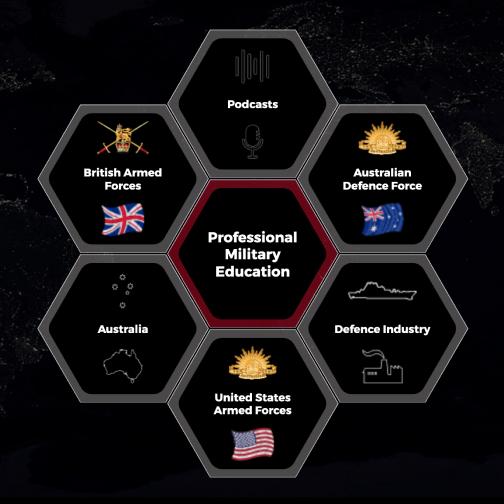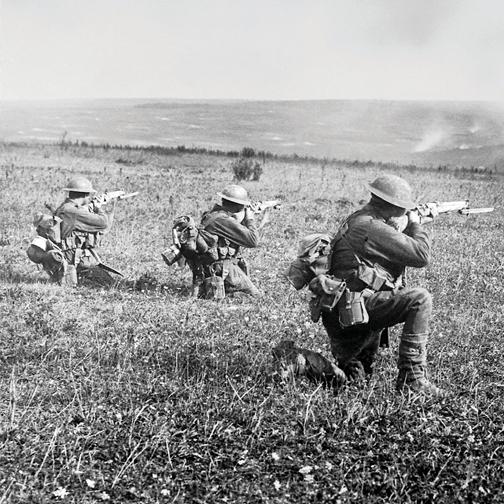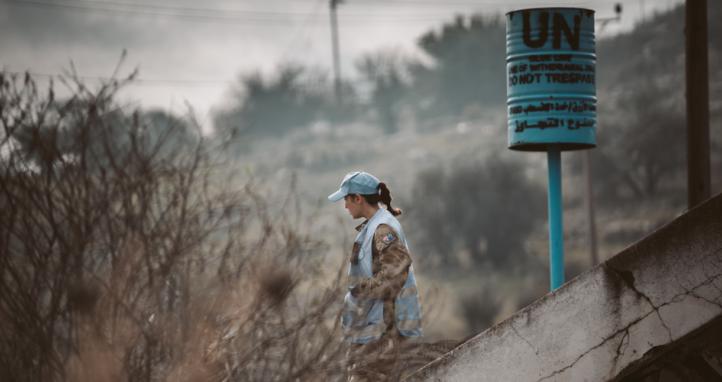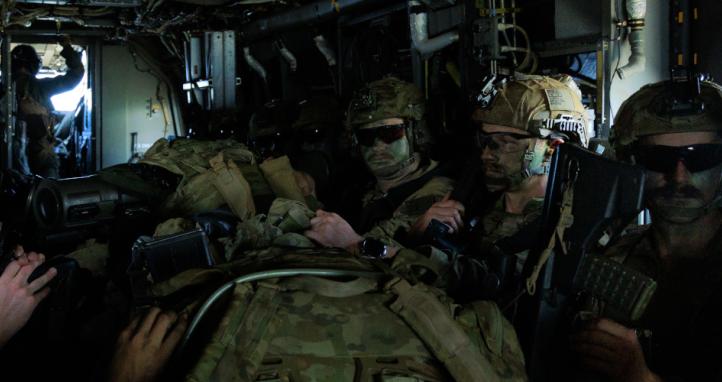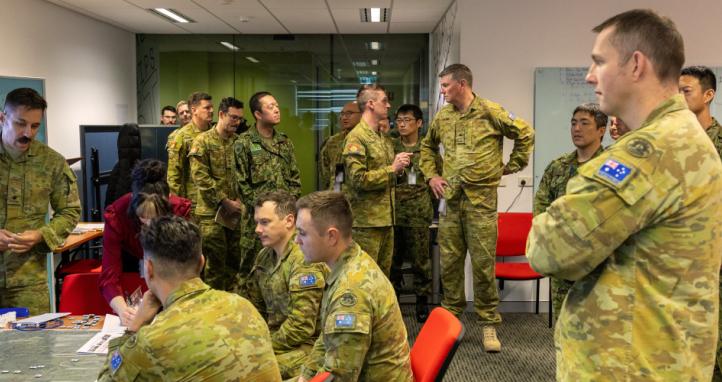This article was a submission to Cove Comp 25.
Australian Army Shooting: Ensuring Contemporary Readiness
“In a man-to-man fight, the winner is he who has one more round in his magazine.”
– Erwin Rommel. Afrika Corps Commander
In an increasingly unpredictable global security environment, the combat readiness of all military personnel is paramount. The Australian Army must urgently update and expand its firing range infrastructure and associated doctrine to meet these evolving demands. This will ensure every soldier can access effective training opportunities to repeatedly build proficiency in fundamental combat marksmanship. This document advocates significant investment in culture, doctrine, and range modernisation, focusing on enhanced accessibility, specialised management, and diversified training opportunities, drawing on recent international conflicts to underscore the critical need for universal combat proficiency.
The Critical Need for Universal Combat Proficiency
The tragic events at the Nahal Oz base in Israel on October 7, 2023, serve as a stark reminder of this brutal reality. Non-combatant surveillance soldiers, despite their intelligence roles, found themselves on the front line with no small arms training and no means to defend themselves during Hamas’s onslaught. 22 young soldiers lost their lives. This incident unequivocally demonstrates that all troops, regardless of their roles, must possess sound fundamental combat marksmanship skills to defend themselves and their comrades. To facilitate this, it is crucial that all troops undertake combat marksmanship training live, moving beyond theoretical or simulated exercises. Furthermore, ensuring units have immediate access to their ‘own’ rifles is essential for fostering consistent readiness and enabling spontaneous training.
The global security landscape, as demonstrated by Australia’s recent experience with Iranian-directed hostile activities on Australian soil, further reinforces the need for universal preparedness. Such unconventional threats mean military personnel, regardless of their role or location, could become targets outside of traditional combat zones. A baseline of combat proficiency provides essential capabilities against these asymmetric and unpredictable threats.
Combat Resource Management (CRM): A New Approach to Training
“A strong hierarchical culture is like a shadowed glass: the thicker it is, the less light it lets in. Such cultures provide stability and order, but at the cost of adaptability. They reinforce what is already known while blinding institutions to external changes. Emerging technologies, however, demand flexibility, curiosity, and the willingness to challenge old assumptions. Traits that rarely thrive in rigid, seniority-based systems.”
– Admiral Hyman G. Rickover. Father of the US Nuclear Navy.
The current firing range infrastructure and related doctrine often present significant barriers to effective and frequent training. The heavy burden of pre- and post-range administration and the thousands of pages of safety doctrine are at odds with both the manoeuvreist approach to warfare and modern culture-based safety systems. To address this, an adaptation of the Crew Resource Management (CRM) approach, termed Combat Resource Management (CRM), should be employed to streamline the Combat Marksmanship Continuum (CMC).
Crew Resource Management (CRM) is a widely applied technique for human factors and team training in high-reliability organisations, originating in the US Nuclear Navy and progressing into aviation and space programs. CRM aims to improve teamwork by fostering a less-authoritarian culture where participants are encouraged to question observed mistakes while retaining a command hierarchy. Implementing these principles transforms marksmanship training into a tangible combat advantage.
Actionable strategies to embed a culture of marksmanship excellence and continuously improve soldier proficiency include:
- Prioritise Command-Level Advocacy for Marksmanship Excellence: Marksmanship readiness begins at the top. Commanders must actively embody and advocate for rigorous standards. Digital training management systems should be utilised for real-time tracking of soldier qualification scores, training participation, and skill progression. The USMC’s Marksmanship Campaign Plan (MCP) is an excellent example of an 'All Corps' approach driven by their commandant.
- Leverage Adaptive Learning Platforms for Personalised Marksmanship Training: Modern technology, similar to advanced Learning Management Systems (LMS), enables customised marksmanship learning experiences. These platforms can create tailored training pathways that cater to specific employment categories, weapon systems (e.g., rifle, pistol, crew-served), individual skill gaps, and environmental conditions. The USMC's Joint Marksmanship Assessment Package (JMAP) software allows Marines to track and compare performance, providing data-driven insights for evaluating equipment and tactics.
- Capture Real-Time Digital Performance Data: Empower soldiers to assess and demonstrate their marksmanship proficiency with tools like digital range logbooks, integrated combat simulators, or real-time practical assignments. Capturing this data signals accountability and refines training methodologies to target specific problem areas.
- Shift from 'Checking Boxes' to 'Tying Outcomes' for Continuous Readiness: Instead of training that concludes with a qualification score, continuous marksmanship development should be supported by lifecycle tools. This ensures training compliance translates into sustained, real-world combat marksmanship behaviours and improved tactical outcomes, integrating realistic combat scenarios and gamified challenges.
- Appreciate and Recognise Superior Marksmanship: Celebrate successes where marksmanship initiatives lead to tangible improvements through commendations, skill badges, or leaderboards. Visible appreciation creates powerful motivators for sustained excellence and fosters a culture of competitive improvement. The cessation of the Australian Army Skill at Arms Meet (AASAM) is a missed opportunity for such recognition.
The core tenets of CRM – Leadership, Decision Making, Shaping Factors, Situational Awareness, Teamwork, Communication, and Assertiveness – with Leadership as the underpinning requirement, will free members of the organisation to train effectively. CRM retains essential doctrine but uses technology, upgrades, and systemic approaches to allow personnel to focus on undertaking training in a predictable, repeatable manner.
Beyond mandatory qualification, a culture of continuous marksmanship improvement is vital. Establishing rifle and pistol clubs on base, run by accredited range teams, would provide an invaluable avenue for soldiers to train for sport, hone their skills, and develop a deeper understanding of marksmanship principles outside of formal training cycles. This proactive approach aligns with lessons from recent conflicts, such as Ukrainian President Volodymyr Zelenskyy's call to arm civilians in February 2022. Encouraging a robust sport shooting culture within the military enhances individual proficiency, fosters unit cohesion, and cultivates a deeper respect for weapon handling and safety. In Switzerland, once soldiers finish service, they may keep their service firearms but are required to 'requalify' annually; this model could be adopted in some form via service Firearms Clubs, potentially aiding retention.
Technological Updates and Range Modernisation
“Nothing was final – that was the hardest lesson to learn. Men do not stay trained. No matter how firm or how formally procedures were promulgated, the insidious and subtle process of erosion sets in at once.”
– Admiral Hyman G. Rickover.
The current layout of many firing ranges is often at odds with delivering the modern Combat Marksmanship Continuum. Classification ranges, for example, are often relics from the 1960s. If upgraded with wireless-controlled, modern target mechanisms, sensors, and diverse targeting options, they could become adaptable, interchangeable, and challenging 'theme parks' allowing for dynamic engagements and realistic scenarios like shooting steel targets, figures, or scaled vehicle silhouettes at various ranges within a safe but challenging environment.
Beyond modernising existing infrastructure, significant investment in building new ranges that are inherently adaptable is necessary. This includes developing a new generation of Marksmanship Training Ranges (MTRs) capable of supporting a wider array of training scenarios. Crucially, basic Urban Training Ranges (UTRs) should be built in all states. These facilities would allow for more realistic scenario-based training, replicating complex environments and bridging the gap between traditional square-range shooting and real-world combat. Ideally, they would incorporate the ability to adapt to the training continuum and employ Lethal, non-lethal (Gel Ball/Paint), and WTSS “Blue fire” weapons to advance individual and collective skills as required. Furthermore, expanding the utility of 25-meter ranges would make it easier for units to conduct essential short-range marksmanship drills without requiring extensive travel or complex setup, increasing training frequency and accessibility.
The Weapons Training Simulation System (WTSS) also requires enhancement. While simulations cannot replace live-fire training, an enhanced WTSS can provide valuable supplementary training. It allows soldiers to practice marksmanship principles, decision-making, and weapon manipulations in a controlled, cost-effective environment, further refining their skills before live-fire exercises. Integrated with range modernisation, an advanced WTSS can serve as a crucial preparatory tool, making live-fire sessions more efficient and impactful.
Dedicated Range Support Teams (RST)
The increasing complexity of range rules and regulations often places an undue burden on units, detracting from valuable training time and resources. A more efficient approach would be to create dedicated Range Support Teams (RSTs). These teams would be responsible for overseeing firing ranges for units, possessing specialised knowledge of all safety protocols, regulations, and comprehensive range management.
RSTs could be responsible for creating and overseeing a dedicated continuum of individual and unit shooting events. They could create and have approved standing range activities that can be employed by units at any stage of the training continuum, particularly on Permanent Basic and Permanent Complex Ranges, removing the potential for activities outside of range safety parameters. They could also deliver range-related courses, remediate qualification issues, and advise units on progression.
By centralising this expertise, units would be freed to concentrate solely on their core training objectives, optimising their time and resources. This professionalisation would ensure consistent application of safety standards and efficient range operation, reducing the risk of errors. This approach aligns perfectly with the principles of Combat Resource Management, by allowing the end-users (the training units) to focus on performance while the operational oversight is managed by specialists. Additionally, these teams could synergise with an enhanced WTSS, providing technical support and managing simulation infrastructure to further streamline the training continuum.
Conclusion
The modernisation of Australian Army firing ranges is not merely an upgrade; it is a strategic imperative for ensuring the safety and effectiveness of every soldier in an increasingly complex and unpredictable world. By adopting a comprehensive strategy encompassing Combat Resource Management, Technological Updates and Range Modernisation, and Dedicated Range Support Teams, Australia can cultivate an Army that is truly ready for any challenge.
This involves expanding the number and utility of 25-Meter, Classification and MTRs, establishing dedicated and expert range teams, building adaptable urban training facilities, enhancing the Weapons Training Simulation System, and fostering on-base marksmanship clubs. Investing in these vital resources will not only enhance combat capabilities but will also fortify the foundational skills necessary for every Australian Army member to operate effectively and survive on the modern battlefield. How might we best champion these changes within the Army’s current planning cycles?
